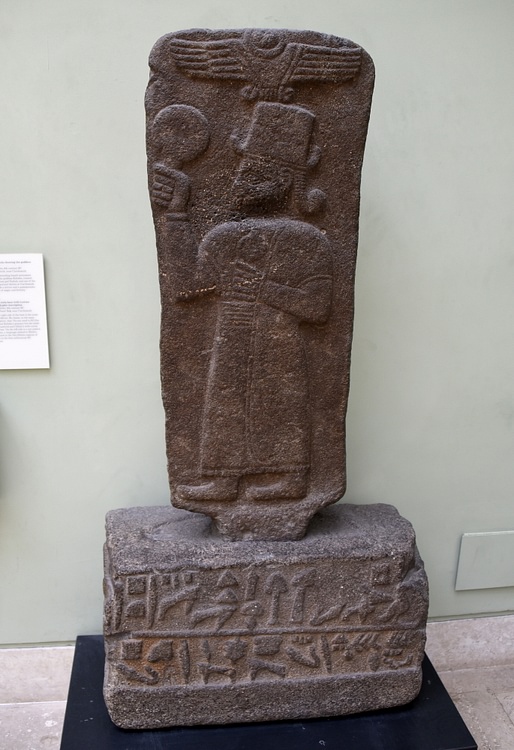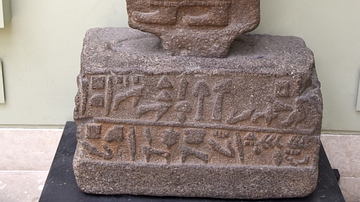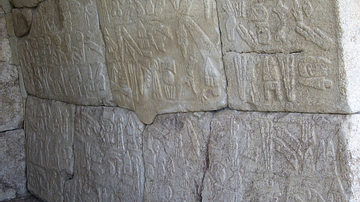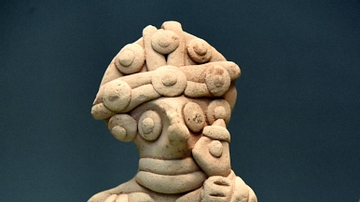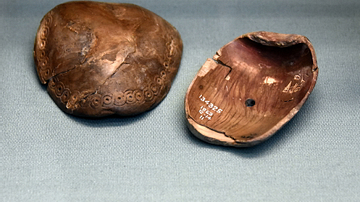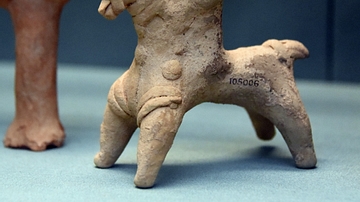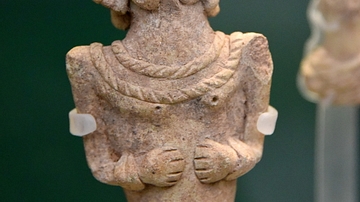Server Costs Fundraiser 2024
Illustration
The upper part is a freestanding basalt monument depicting the goddess Kubaba, consort of the storm god Teshub, and one of the most important deities at Carchemish. She holds a mirror and pomegranate, symbols of magic and fertility. Neo-Hittite, 9th century BCE. From Birecik, near Carchemish.
The lower part is a basalt stela's base with Luwian hieroglyphic inscriptions. On the right side of the base is the name of an official. He claims, in the main inscription, that "No-one used to fill [the goddess] Kubaba's granary but she made house-lord and I filled it with cereal and wine". On the left side is a sun symbol. Luwian, a language related to Hittite, was used in the Neo-Hittite regions of Syria in the 1st millennium BCE. Neo-Hittite, 9th century BCE. From Yusuf Beg, near Carchemish. (The British Museum, London).
About the Author
Cite This Work
APA Style
Amin, O. S. M. (2016, September 07). Hittite Basalt Stela Showing Goddess Kubaba. World History Encyclopedia. Retrieved from https://www.worldhistory.org/image/5617/hittite-basalt-stela-showing-goddess-kubaba/
Chicago Style
Amin, Osama Shukir Muhammed. "Hittite Basalt Stela Showing Goddess Kubaba." World History Encyclopedia. Last modified September 07, 2016. https://www.worldhistory.org/image/5617/hittite-basalt-stela-showing-goddess-kubaba/.
MLA Style
Amin, Osama Shukir Muhammed. "Hittite Basalt Stela Showing Goddess Kubaba." World History Encyclopedia. World History Encyclopedia, 07 Sep 2016. Web. 26 Jul 2024.

